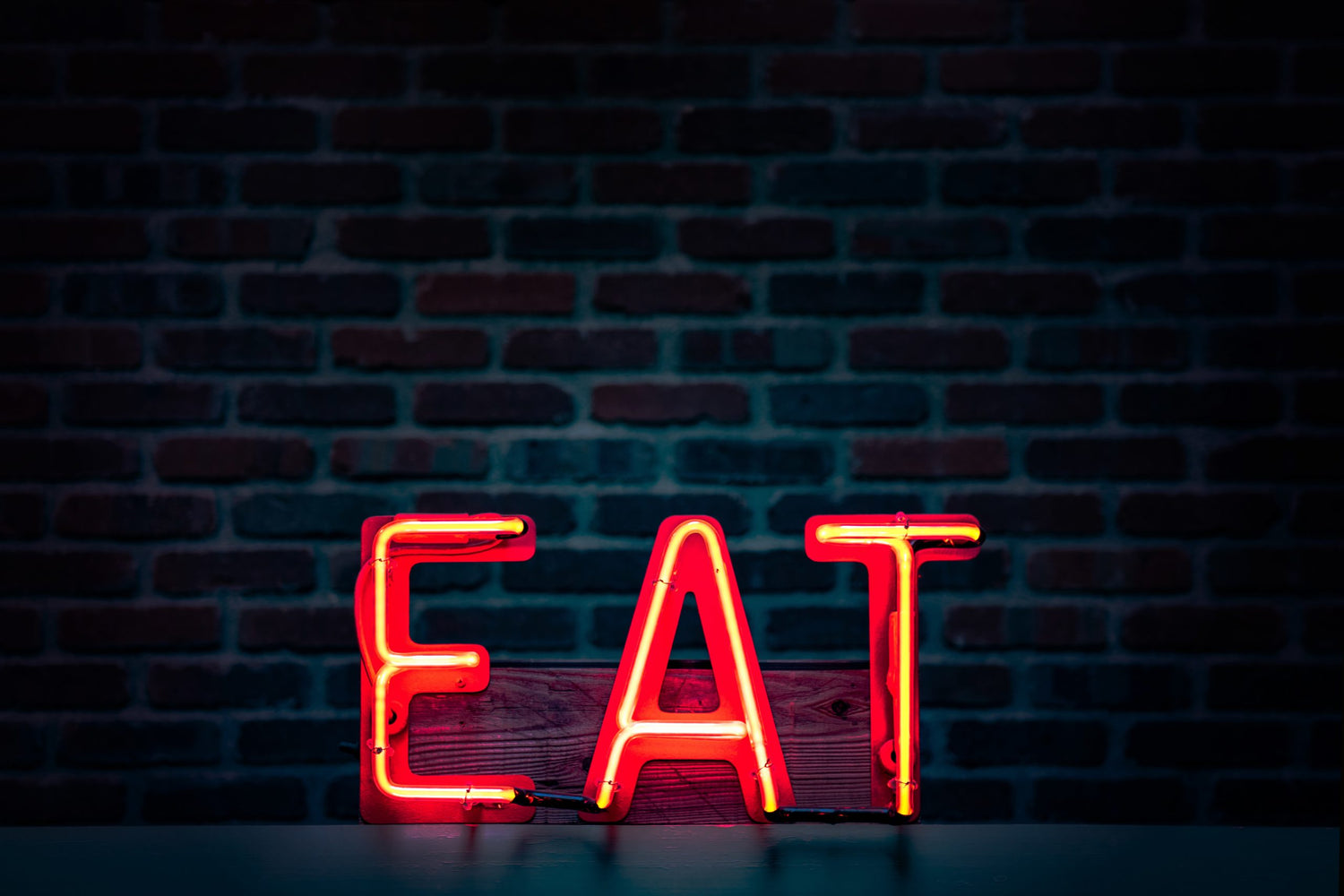Migraine diet? Have you ever heard of such a thing?
Actually, yes. And it makes perfect sense when you think about it. Picture this.
That Chinese buffet looks wonderful (yes, I said buffet! Don’t judge!). You pile up your plate with all that deliciousness and sit down ready to enjoy your meal. But two bites in and the pain starts. It’s then you realize that you’ve inadvertently triggered a migraine.
That delicious looking food must have contained MSG.
And MSG is a trigger for you.
Or maybe you are one of those migraineurs who has frequent attacks and it seems as if literally everything is a trigger.
What if changing the way you eat could have the potential to decrease your migraines?
Changing your diet could have a significant positive impact on your life.
If you have migraine you know how difficult it can be to manage your attacks. The truth is migraine management is typically a combination of medication and lifestyle changes and what works for one person may not necessarily work for you. Often, it takes trial and error to find that sweet spot and get relief. The food you eat plays a large part in that strategy. A migraine diet could help lessen the frequency and intensity of your attacks.
You probably already know about food triggers, but there are foods and eating lifestyles that go beyond trigger avoidance. These foods nourish the body and decrease inflammation. While researchers don’t exactly know what causes migraine, most do agree that food plays a large part in good health, mood stability, and, yes, migraine management.
Here’s what you need to know about eating to manage your migraine.

Foods that May Help Prevent Migraine
Most migraines cannot be narrowed down to a single trigger. That is a given. If making dietary adjustments helps even a little, though, isn’t it worth a try?
In a word, the type of food you want to eat is FRESH. This means unprocessed, no preservatives, nothing artificial, just fresh, whole foods.
The problem is, pre-packaged, processed foods are just plain easy. They are easy to find, easy to buy, easy to prepare, and easy to eat. You don’t have to put a lot of thought into it, just consume it and you’re done. BUT these easy foods also contain monosodium glutamate (MSG), nitrites, artificial flavorings, phenylalanine, an abundance of sodium, and other stuff you probably can’t pronounce (and definitely don’t want in your body).
Your best bet is to choose fresh meats and fish, fresh fruits and vegetables, and whole grains. Many foods contain ingredients you don’t want and can trigger or exacerbate a migraine attack, so you’ll want to be careful. You’ll even find MSG lurking in spices and salad dressings.
The Association of Migraine Disorders has published a list of best food choices for migraine. Prepared foods that are on the list include:
- Plain cereals (do not contain dried fruit, MSG, nuts, or aspartame
- Plain potato chips or pretzels
- Sesame seed or plain bagels
- Plain crackers
- Bread from a store (not fresh or homemade bread)
- Quick breads
The list does include various seeds like pumpkin, poppy, sunflower, and sesame. Fresh beef, turkey, chicken, veal, and fish are included on the list – in moderation, but no marinated or breaded meats. Fresh fruits and vegetables as well as homemade salad dressings are included.
The Physician’s Committee for Responsible Medicine (PCRM) is a proponent of plant based diets. They published a list of “pain-safe” foods. These foods are considered to be safe because they are not considered to be a trigger for migraine or any other condition. The PCRM took a page (literally) from Dr. Neal Barnard’s book Foods that Fight Pain. The list includes:
- Cooked vegetables
o Broccoli
o Artichokes
o Zucchini
o Chard
o Spinach
o Collards
o Squash
o Asparagus
o Sweet potatoes
o Beans
- Dried or cooked fruits (except for citrus)
o Pears
o Cherries
o Prunes
o Cranberries
- Brown rice
The idea is to only eat the foods on the list for two weeks then gradually add other foods into your diet. This will allow you to identify potential triggers and sensitivities.
Bottom line though, fresh is best. When you can get food at its basest, most natural level it is better for not only your migraine, but for your body.

Eating Keto for Migraine
The keto diet is a recent trend in weight loss but there is also some proof that it is effective in treating epilepsy. Its proponents sing its praises, crediting it with curing a laundry list of medical conditions such as diabetes, hypertension, and more recently, migraine. In truth, there are simply not enough solid clinical studies to provide a full picture of the validity of these claims as well as the long term effects of the keto diet. However, some studies do show that long term effects of keto can include poor bone health.
In a nutshell, the classical ketogenic diet (cKD) induces ketosis through a very low carb and high fat diet. The concept behind this is that your body will burn fat for energy and when it comes to weight loss, there’s no contest. This diet will help most people lose weight. There are numerous studies on the effectiveness of low carb diets for weight loss.
The main complaint that many people have is that it isn’t sustainable. The diet is extremely restrictive and complex. Some people have trouble following it or finding foods that they can eat. If you are a picky eater, that may be your challenge should you choose to take the keto path.
As for migraine, there isn’t much by way of studies to support its effectiveness against attacks. Visit any migraine Facebook group or migraine forum and there will inevitably be several posts on the keto diet for migraine – and it does seem to work for some people.
Bottom line, migraine is not an easy disease. It can be very difficult to treat, and some people will take relief wherever they can get it. If you can follow the keto diet and it works for you, more power to you. However, it is crucial that you talk with your doctor before starting the diet, especially if you have any other health conditions. Granted, any diet should be followed under a doctor’s care, but it is especially true of this one. We just don’t know enough about it and how it affects the body long term yet.
Heal Your Headache Migraine Diet
Heal Your Headache, by David Bucholz, is a migraine diet that not only helps you identify your triggers, but also raises your migraine threshold. The emphasis is more on diet and less on medication. Basically, it is an enhanced elimination diet, but it goes much farther and touches on some vital areas that affect nearly all migraineurs at one time or another.
The book has three sections:
- Avoiding the quick fix – This addresses the typical migraine abortives such as pain medication, OTC meds, triptans, and opioids. It also discusses rebound headaches from medication overuse.
- Reducing your triggers – This is the meat of the Heal Your Headache diet (HYH diet). It walks you through eliminating your trigger foods. According to Bucholz, following this diet can increase your migraine threshold so that when you are exposed to other triggers such as odors or bright light, you may find they don’t cause a migraine attack.
- Raising your threshold – This walks you through daily preventative care if the elimination diet does not provide enough relief. It also helps you end the rebound headaches.
Many people who have tried the diet successfully say that the first month or so is the most difficult. During that time all potential dietary triggers are eliminated. It is tough, but after the initial diet cleanse you can begin reintroducing foods. Plus, the book offers a number of great substitutions. It does take a few months to get the full effect, but many migraineurs say that it works well for them.

The Core of a Migraine Diet: Eating During an Attack
Eating during an attack is tricky. The nausea and intense pain that are hallmark traits of a migraine may seem like they would discourage any food or beverage intake. That isn’t always the case though. While some people don’t eat anything, others have only specific foods that they can tolerate. A recent conversation on this topic in a migraine forum yielded some interesting responses. This is what various migraineurs said they eat or drink during an attack:
- Saltines
- Ginger Ale
- Dry Toast
- Yogurt
- Pasta
- Ginger or Peppermint Tea
- Anything Spicy
- Soda (Coke, Sprite, etc.)
- Water
- Popsicles (Real fruit juice, or Pedialyte)
- Broth
- Popcorn
- Boiled Egg
- Salted Nuts (Almonds, Cashews, etc.)
- Bananas
- Rice
- Gatorade
- Cooked Potato
- Water. Lots of water
- Salty Potato Chips
- Soup
- Chocolate
- Sweet Potatoes
- Pretzels
- Ice Cream
- Cereal
- Applesauce
- Milkshake
- Melon
- Frozen Grapes
- Tart Cherry Juice
When is your go-to food when you are fighting a migraine attack?
If you are looking for more information on migraine diet or are interested in support and resources, we recommend three fantastic migraine groups on Facebook:
- Migraine Strong: Migraine Diets, Healthy Living, and More!
- New Chronic Migraine Support Group
- Move Against Migraine
Foods that May Fight Pain: Anti-Inflammatory and Migraine Diet
The Arthritis Foundation has a list of foods that are considered to be anti-inflammatory or may fight pain. Take care when following this list though. Some of the foods may actually trigger a migraine so proceed with caution.
- Ginger – anti-inflammatory
- Blueberries – phytonutrients
- Nightshade vegetables – anti-inflammatory
- Pumpkin seeds – magnesium
- Salmon – omega 3 fatty acid (anti-inflammatory)
- Beans – phytonutrients
- Turmeric – anti-inflammatory
- Tart cherry juice – antioxidants and anti-inflammatory
- Virgin olive oil – oleocanthal (anti-inflammatory)
- Hot peppers – capsaicin (painkilling and anti-inflammatory)
- Peppermint oil – pain reducer
There is some evidence that suggests the resveratrol in red wine may reduce pain, but don’t be too quick to tip back that bottle. Alcohol can also be a migraine trigger.

Eating for Good Gut Health
The connection between gut health and migraine is still being studied, but there is some pretty compelling evidence already that a healthy gut can result in fewer migraine attacks. What makes it really appealing though is that it’s pretty easy to follow a gut health diet.
Reducing inflammation in the body is the primary focus. This means cutting out preservatives, sugar, and processed foods while incorporating more fresh, whole foods as well as anti-inflammatory foods into the diet. The Mediterranean Diet is a popular choice, but migraineurs are warned to watch their triggers and eliminate foods that cause them problems.
Fermented foods are often associated with good gut health, but that may be a trigger for some. Virgin olive oil, whole grains, and lean meats like chicken and fish are great staples. The key is finding an eating lifestyle you can stick with.
A good probiotic is also key to a healthy gut. Look for one that has bifido and is refrigerated. A prebiotic may help as well.
Anti-inflammatory Foods
The Arthritis Foundation recommends the Mediterranean Diet for reducing inflammation in the body. Some of the top anti-inflammatory foods they recommend include:
Salmon, anchovies, sardines, and tuna – Fatty fish are rich in omega-3 fatty acids. Omega-3s reduce both interleukin-6 and C-reactive protein, both of which are inflammatory proteins in the body.
- Eat at least 3 or 4 ounces 2 times a week.
- Strawberries, kale, blueberries, broccoli, cherries, spinach, and blackberries – Fresh fruits and vegetables contain antioxidants which provide support to the immune system and may, in turn, reduce inflammation. Eat at least 1.5 cups of fruit and 2 cuts of vegetables at each meal – preferably more.
- Almonds, pine nuts, walnuts, and pistachios – Nuts and seeds have monounsaturated fat which fights inflammation. Eat about 1.5 ounces a day.
- Red kidney beans, pinto beans, garbanzo beans, and black beans – Beans give you a lot of bang for your nutritional buck. They are loaded with all the good stuff, including anti-inflammatory compounds and antioxidants, not to mention magnesium. Eat at least 1 cup 2 times a week.
- Extra virgin olive oil – Make sure it is extra virgin to get the most of the oil’s monounsaturated fat, oleocanthal, and antioxidants. Look for olive oil packaged in a dark bottle and make sure it has a seal or certification such as North American Olive Oil Seal, COOC, or DOP. Also, check to see that the harvest date is close to the date of purchase. Use 2 or 3 tablespoons a day in salad dressings, for cooking, and in dishes.
- Onions, nightshades, and fiber rich foods may also have some anti-inflammatory properties.
- Foods that contain carotenoids (peppers, carrots, and some fruits) are rich in antioxidants and may lower inflammation.
The diet also advises eliminating processed foods, cut down on salt, and drink in moderation. Vegetables and fruit should make up half of your plate, choose healthy fats, don’t go overboard on protein, and eat whole grains.
Diet plays an important role in your overall health and definitely has an impact on pain as well as many medical conditions. By learning how to eat for your migraine you may be able to reduce your number of migraine days and decrease the intensity of your attacks.
Is a migraine diet right for you? Only you can answer that. Talk to your doctor. The key to relief from your migraine pain may be in the foods that you eat.

Resources
Anti-Inflammatory Diet, www.arthritis.org/health-wellness/healthy-living/nutrition/anti-inflammatory/anti-inflammatory-diet.
Abbasi, Jennifer. “Interest in the Ketogenic Diet Grows.” JAMA, American Medical Association, 16 Jan. 2018, jamanetwork.com/journals/jama/article-abstract/2669724.
Amicis, De, et al. “Long-Term Effects of a Classic Ketogenic Diet on Ghrelin and Leptin Concentration: A 12-Month Prospective Study in a Cohort of Italian Children and Adults with GLUT1-Deficiency Syndrome and Drug Resistant Epilepsy.” MDPI, Multidisciplinary Digital Publishing Institute, 25 July 2019, www.mdpi.com/2072-6643/11/8/1716.
“Can a Ketogenic Diet Prevent Migraines?” Migraine Again, 14 Jan. 2020, migraineagain.com/can-a-ketogenic-diet-prevent-migraines/.
Galanakis, Charis M. The Role of Alternative and Innovative Food Ingredients and Products in Consumer Wellness. Academic Press, 2019.
Gardner, Christopher D. “Low-Fat vs Low-Carbohydrate Diet on Weight Loss in Overweight Adults.” JAMA, American Medical Association, 20 Feb. 2018, jamanetwork.com/journals/jama/fullarticle/2673150.
Gordon, Barbara. “What Is an Anti-Inflammatory Diet?” EatRight, www.eatright.org/health/wellness/preventing-illness/what-is-an-anti-inflammatory-diet.
Heikura, et al. “A Short-Term Ketogenic Diet Impairs Markers of Bone Health in Response to Exercise.” Frontiers, Frontiers, 2 Dec. 2019, www.frontiersin.org/articles/10.3389/fendo.2019.00880/full?utm_source=F-NTF&utm_medium=EMLX&utm_campaign=PRD_FEOPS_20170000_ARTICLE.
Hu, T., et al. “Adherence to Low‐Carbohydrate and Low‐Fat Diets in Relation to Weight Loss and Cardiovascular Risk Factors.” Wiley Online Library, John Wiley & Sons, Ltd, 15 Jan. 2016, onlinelibrary.wiley.com/doi/full/10.1002/osp4.23.
Kuklovskai︠a︡ Elizaveta. “DP.” Amazon, “Books by Mail” Pub. Co., www.amazon.com/dp/0761125663/ref=cm_sw_em_r_mt_dp_U_gH9nEb2J6510W.
“Migraine Prevention Diet.” Johns Hopkins Lupus Center, www.hopkinslupus.org/lupus-info/lupus-affects-body/lupus-nervous-system/migraine-prevention-diet/.
“Migraine Safe Foods by Category.” Association of Migraine Disorders, 14 Feb. 2019, www.migrainedisorders.org/migraine-safe-foods-by-category/.
Min, Jong, et al. “The Ketogenic Diet as a Treatment Paradigm for Diverse Neurological Disorders.” Frontiers, Frontiers, 21 Mar. 2012, www.frontiersin.org/articles/10.3389/fphar.2012.00059/full#h15.
Slomski, Anita. “Low-Carb Diets Help Maintain Weight Loss.” JAMA, American Medical Association, 29 Jan. 2019, jamanetwork.com/journals/jama/article-abstract/2722768.





